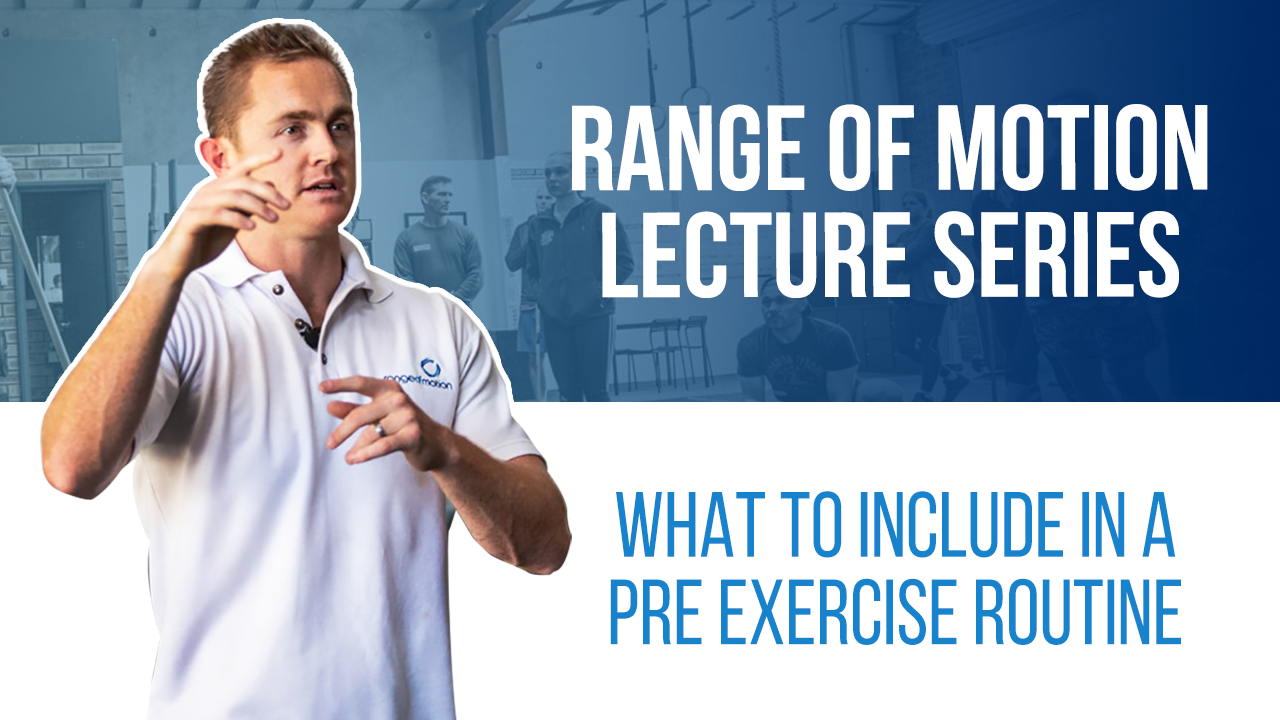– Let’s talk about pre-exercise. Prior to training, prior to exercising, you should have a certain pre-exercise routine. What you should do is take movements specific to your session. If you’re squatting, don’t do your pre-exercise routine for pull-ups. If you’re rowing, don’t do your pre-exercise routine for a run. Specific to the movements that you are doing. Now, what this does is it reduces your risk of injury, increases the efficiency of your movement, because it turns up the volume knobs on the nerves that we’re using. It innervates those nerves, turns on the nerves, increases your power output and your work capacity. The stuff you’re doing pre-training, two goals of this, activation and release. So, your activation stuff, again, is turning the volume up on those nerves that we need to do what we’re about to do. If you’re underactive through the glutes, it’s manipulating your environment maybe by doing banded squats to allow those, those nerves, those glutes, those muscles, and therefore those movement patents to turn on pre-training. And then to cause, also, some sort of release. We talked about this yesterday when we talked about PNF and mobility that if you’re so tight that you cannot get into a safe, effective, efficient position even though stretching is going to reduce the ability of your muscles to generate strength and power in a clinical point of view. In a practical point of view, release can be used for pre-training to put you in better positions. The way that you should do this, who knows what a degree of freedom is? So, it’s an engineering term, basically. A degree of freedom around a joint is the movement that that joint can do. So, my shoulder can abduct and adduct and flex and extend and externally rotate and internally rotate and horizontally abduct and horizontally adduct. And, different joints have different degrees of freedom. And what you should do is look at a mechanical model of a movement like a squat. So, if you’re doing a squat. Uh, Darren just jump up and do a squat for me. And you see, do five, as he’s squatting at the ankle there is dorsal flexion, planar flexion. At the knee there’s flexion extension. At the hip there’s flexion extension and a little bit of lateral rotation. Cool, have a seat. So we can break it down and put together a mechanical model of these movements. A strict press, flexion of the shoulder, extension of the elbow. So what we want to do is look at every movement in your training session, look at the degrees of freedom in that movement and move passively or actively, rather, through that. If you’ve got flexion extension of the hip, this is what you should be doing to get that movement. Flexion extension of the knee, horizontal abduction and adduction. Internal, external rotation, etcetera. Okay, so hit those before the session. And then, once you’ve done all that progress to full weights with correct bracing. So if you’re doing a squat, again, in a squat here. Yep, jump up for me. Standing. Stand tall. Squeeze your glutes. Glutes are now on. That’s put the pelvis in a neutral position. Use your ribs to lock, use your abs to lock your rib cage down. Good. Screw your feet into the ground. Turn the glutes off and squat. We’re activating those muscles now and he’ll do that progressively with heavier and heavier weights until he gets to the working weight for that session. That’s what you should be doing pre-exercise.To summarise your pre-exercise routine. Move your body through the specific degrees of freedom for your session and then build to the full working loads for that session. If you’re not doing that before, guys. If your pre-exercise routine is not specific to the session make some changes so that it is. A general warm up has some merit, but not when it comes to maximising the effectiveness of your warm up.
The most common exercise mistake that limits people living with a disability
Every day, we work with people who do not let their disability define them. But when it comes to exercise, we see one...





